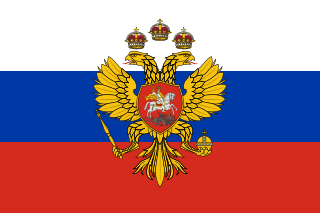
Count Alexander Vasilyevich Suvorov-Rymniksky, Prince of Italy, was a Russian general in service of the Russian Empire and the Habsburg monarchy. He was Count of Rymnik, Graf of the Holy Roman Empire, Feldmarschall of the Holy Roman Empire, Prince of the Kingdom of Sardinia, Grand marshal of the Kingdom of Sardinia, Prince or Knyaz of the Russian Empire, Field marshal and the last Generalissimo of the Russian Empire. Suvorov is considered one of the greatest military commanders in Russian history and one of the great generals of the early modern period. He was awarded numerous medals, titles, and honors by Russia, as well as by other countries. Suvorov secured Russia's expanded borders and renewed military prestige and left a legacy of theories on warfare. He was the author of several military manuals, the most famous being The Science of Victory, and was noted for several of his sayings. He never lost a single battle he commanded, and his military record is extensive; Suvorov won in a total of 63 battles without suffering a major defeat. He raised Russian military glory to a height to which it had never reached before or since. Several military academies, monuments, villages, museums, and orders in Russia are dedicated to him.
The Treaty of Moscow was signed on 12 August 1970 between the Soviet Union and West Germany. It was signed by Willy Brandt and Walter Scheel for West Germany's side and by Alexei Kosygin and Andrei Gromyko for the Soviet Union.

This article discusses the administrative-territorial division of the Republic of Uzbekistan. The Article 68 of the constitution of Uzbekistan defines:
The Republic of Uzbekistan shall consist of regions, districts, cities, towns, settlements, kishlaks and auls (villages) in Uzbekistan and the Republic of Karakalpakstan.

Hertsa or Hertza is a city located in Chernivtsi Raion, Chernivtsi Oblast in western Ukraine. It hosts the administration of Hertsa urban hromada, one of the hromadas of Ukraine, and has a population of 2,097.

The 76-mm divisional gun M1936 (F-22) was a Soviet divisional semi-universal gun, adopted for Red Army service in 1936. This gun was used in conflicts between the USSR and Japan on the Far East, in the Winter War and in World War II. Many F-22s were captured by the Wehrmacht, modernized by the Germans and used against Soviet forces.
Kaharlyk is a town in Kyiv Oblast (province) of Ukraine, located in Obukhiv Raion. Kaharlyk hosts the administration of Kaharlyk urban hromada, one of the hromadas of Ukraine. Population: 13,133.
Kalmiuske or Komsomolske is a city and the nominal administrative center of Kalmiuske Raion, Donetsk Oblast (province) of Ukraine.

The Tsardom of Russia, also known as the Tsardom of Muscovy, was the centralized Russian state from the assumption of the title of tsar by Ivan IV in 1547 until the foundation of the Russian Empire by Peter the Great in 1721.

The Bulgarian Resistance was part of the anti-Axis resistance during World War II. It consisted of armed and unarmed actions of resistance groups against the Wehrmacht forces in Bulgaria and the Tsardom of Bulgaria authorities. It was mainly communist and pro-Soviet Union. Participants in the armed resistance were called partizanin and yatak.
The following lists events that happened during 1941 in the Union of Soviet Socialist Republics.

Alexander Nikolayevich Samokhvalov was a Soviet Russian painter, watercolorist, graphic artist, illustrator, art teacher and Honored Arts Worker of the RSFSR, who lived and worked in Leningrad. He was a member of the Leningrad branch of Union of Artists of Russian Federation, and was regarded as one of the founders and brightest representatives of the Leningrad school of painting, most famous for his genre and portrait painting.

Galina Alexeevna Rumiantseva was a Russian Soviet realist painter and graphic artist, who lived and worked in Saint Petersburg. She was regarded as one of representatives of the Leningrad school of painting.

The Republic of Mahabad, also referred to as the Republic of Kurdistan, was a short-lived Kurdish self-governing unrecognized state in present-day Iran, from 22 January to 15 December 1946. The Republic of Mahabad, a puppet state of the Soviet Union, arose alongside the Azerbaijan People's Government, a similarly short-lived unrecognized Soviet puppet state.
The 1970 European Weightlifting Championships were held in Szombathely, Hungary from June 20 to June 28, 1970. This was the 49th edition of the event. There were 137 men in action from 21 nations.

The Soviet Athletics Championships was an annual outdoor track and field competition organised by the Soviet Athletics Federation, which served as the Soviet national championship for the sport.
The 1973 European Weightlifting Championships were held in Madrid, Spain from June 10 to June 18, 1973. This was the 52nd edition of the event. There were 130 men in action from 23 nations.
The 1974 European Weightlifting Championships were held in Verona, Italy from May 27 to June 6, 1974. This was the 53rd edition of the event. There were 162 men in action from 26 nations.
The 1978 European Weightlifting Championships were held in Havířov, Czechoslovakia from June 10 to June 18, 1978. This was the 57th edition of the event. There were 128 men in action from 25 nations.
Athletics was one of the sports at the Spartakiad of the Peoples of the USSR, and featured on the programme at all ten editions of the competition from 1956 to 1991. The competition was incorporated into the annual Soviet Athletics Championships in 1963, 1967, 1971, 1975, 1979, 1983 and 1991. The 1986 edition was not incorporated into the senior national championship as the Spartakiad imposed an upper age limit of 23 years for competitors that year. The results of the 1986 men's 10,000 metres were excluded from the Spartakiad rankings due to the slow finishing times achieved in the 30 degree heat.
Events in the year 1971 in Bulgaria.









